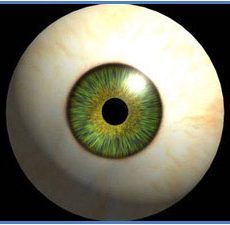
Visual vocabulary
San Cristóbal: (0276) 343-7209 | Caracas: (0212) 576-4038 | Ciudad de México: +52-55-5574-9398 | Puebla: +52-222-290-7591

Refractive surgery
Surgery for nearsightedness (myopia), farsightedness (hyperopia) and astigmatism.
For more than a century (Snellen 1869, Schioetz 1885) in different parts of the world have studied different methods to correct refractive errors such as nearsightedness, farsightedness and astigmatism, requiring the use of corrective lenses.
In 1949, Dr. Jose Ignacio Barraquer Moner (1916-1998), “The father of modern refractive surgery “, born in Spain , developed his professional life in Bogotá, Colombia, describes the modern refractive surgery based on the “Law of Thicknesses”.
In his book (1969) described: “Refractive corneal surgery is here to stay and I think in the coming years will be the most frequently practiced by ophthalmologists engaged in anterior segment surgery, given the great demand for it “.
Over the years 80-1993, Dr. Fyodorov in the Soviet Union popularized the Radial keratotomy.
With the advancement of technology the principles of Dr. Barraquer Moner were applied by researchers in different parts of the world to achieve excellence currently involved refractive surgery with excimer laser.
Since 1983 Trokel, described the removal of corneal tissue excimer laser with a precision of microns.
As a patient must respond to the following questions before you think of Refractive surgery:
Who can perform Refractive Surgery?
To consider this surgery your eye doctor should perform a complere examination of your eyes, using special equipment to determine if your eyes are completely healthy and know if you had refractive stability over the past two years. You should not wear contact lenses two weeks prior to performing the following tests:
Visual acuity with and without correction
Refraction
Anterior segment examination
Retinal exam
Computerized corneal topography
Corneal pachymetry
What patients should avoid refractive surgery?
Patients who have the following conditions should NOT have this surgery:
Abnormalities of the cornea (endothelial dystrophy, shingles, collagen disease, keratoconus and very thin corneas)
Disorders of eyelid closure
During pregnancy (you need to wait 6 months after delivery)
Ophthalmologist trained to perform a Refractive Surgery?
This procedure is considered to be simple and fast. As a patient know and demand that your ophthalmologist has adequate training and certified to perform this surgery. It is also imperative that you know what type of machine is to be used. Remember the saying “cheap is expensive”.
What does the laser in my eyes?
The laser modifies the refractive power of the cornea is the main lens of the eye. The cornea is the anterior lens of the eye. Using this technique the anterior curvature of the cornea is changed and it changes its power as a lens, allowing it to properly focus light rays on the retina. The excimer laser can sculpt the cornea to reshape it.
How and where this surgery done?
It is an ambulatory surgery performed under topical anesthesia (drops). The patient leaves the operating room on their own and resume normal activities shortly.
If you are interested in knowing if you are an excellent candidate for this surgery or if you want a complete visual examination we welcome a visit for our services. We have qualified staff, safe and proven technology since 1996. If this surgery meet your expectations please read these recommendations.
By: Dr. Beatriz Antzoulatos.